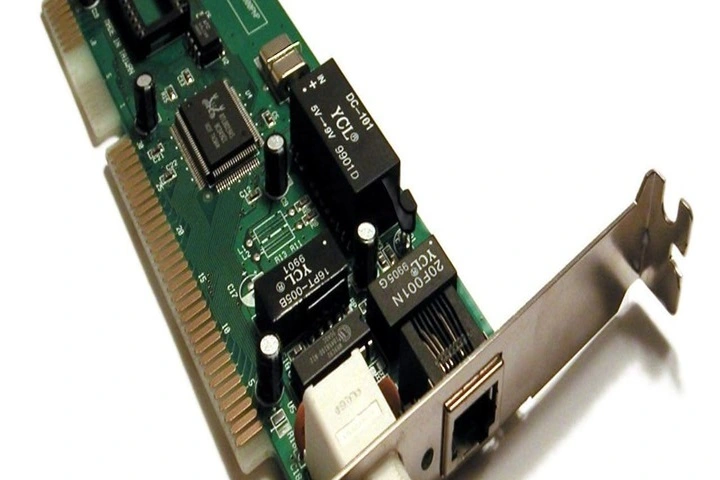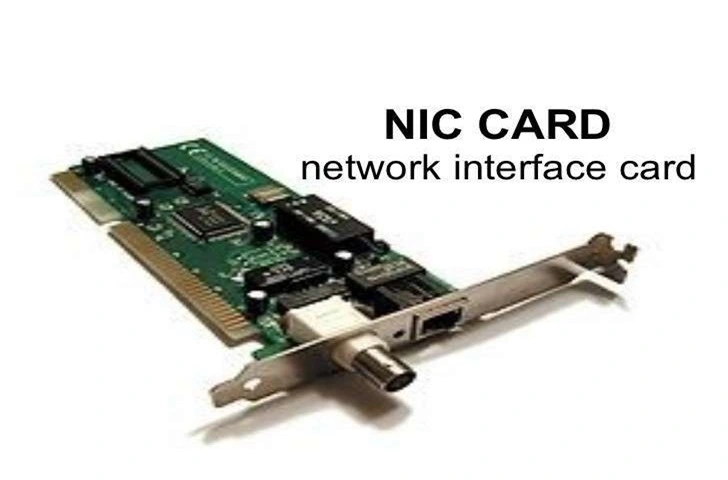When you’re setting up a network for your computer or server, choosing the right Network Interface Card (NIC) is crucial. A NIC is the hardware that connects your device to a network, enabling network connectivity and allowing data to flow seamlessly between your device and other networked devices.
In this guide, we’ll break down everything you need to know about NIC cards, from their functions to how to choose the best one for your needs.
What is a Network Interface Card (NIC)?
A Network Interface Card (NIC), often referred to as a network adapter, is a hardware component that allows a device to connect to a network.
Whether you’re using a wired Ethernet connection or wireless connection, the NIC plays a crucial role in facilitating communication between your device and the network. It converts the digital signals from your computer into electrical signals that can travel over the network medium, such as Ethernet cables, fiber optic cables, or Wi-Fi signals.
The primary function of the NIC is to manage data transfer, allowing your computer or server to send and receive data to and from other devices on the network. This makes it essential for any device that needs to connect to a Local Area Network (LAN) or the internet.
What is a Network Interface Card Used For?
The NIC function is to provide a connection between your device and a network. It enables devices to communicate with each other, whether over a LAN (Local Area Network), WAN (Wide Area Network), or the internet.
One of the primary functions of a NIC card is to convert data packets into signals that can be transmitted over the network. These signals can be either electrical (for wired connections) or radio waves (for wireless connections). The NIC ensures that data is transferred from one device to another without errors and that it arrives at the correct destination.
A Wi-Fi card or wireless NIC allows devices to connect to a network without the need for physical cables. On the other hand, Ethernet cards or wired NICs use Ethernet cables to establish a stable, high-speed connection.
How Does a NIC Work?
At its core, the NIC works by converting digital signals from your computer into electrical signals that can travel over the network medium.
These electrical signals are transmitted as data packets, which are small chunks of information that travel from one device to another. Once the data packet reaches its destination, the NIC on the receiving device converts the electrical signals back into digital data that the computer can process.
Data Link Layer
The NIC operates at the data link layer of the OSI model, which is responsible for the reliable transmission of data over the physical network. This layer ensures that data is properly packaged and transmitted from one device to another while avoiding issues like data loss or collisions. A MAC address is used to uniquely identify each device on the network, ensuring the data reaches the right destination.
Types of NICs
There are several types of NICs available depending on your needs. These include wired NICs, wireless NICs, and virtual NICs, each serving a specific purpose.
Wired NICs
Ethernet NICs, also known as wired network cards, are the most common type of NIC used in wired LAN setups. These NICs use Ethernet cables to provide a stable, high-speed connection. Gigabit Ethernet and 10 Gbps network cards are commonly used in homes and businesses that require high-speed network performance.
Wireless NICs
Wireless NICs, such as Wi-Fi cards, allow devices to connect to networks without the need for physical cables. They work by using wireless data transmission over radio waves. These NICs are commonly used in laptops, smartphones, and other mobile devices. They connect to the network through a wireless router or access point, making them ideal for environments where cabling is not practical.
Virtual NICs
In virtualized environments, virtual NICs are used to provide network connectivity to virtual machines (VMs). These NICs allow virtualized servers to communicate with the physical network and with each other, without requiring dedicated hardware.
NIC Components
The NIC card consists of several important components that help it perform its functions effectively.
Hardware Components
The controller is the central component of the NIC. It processes the data transmission, converting digital data into signals that can be sent across the network. The interface port connects the NIC to the physical network medium, whether that’s an Ethernet cable, fiber optic cables, or wireless signals.
A MAC address is assigned to each NIC, which acts as a unique identifier for the device on the network. This ensures that data packets are sent to the correct destination.
Software Components
The drivers and firmware are essential for the NIC to communicate with the operating system and the network protocols. Without proper drivers, the NIC would not function correctly, and you wouldn’t be able to connect to a network.
Key NIC Features
When choosing a NIC card, there are a few key features to consider, such as speed, duplex modes, and compatibility.
Speed and Bandwidth
The speed of a NIC is measured in megabits per second (Mbps) or gigabits per second (Gbps). 10 Mbps network cards, 100 Mbps NICs, 1 Gbps network cards, and 10 Gbps NICs are some of the most common options. Higher speed NICs are necessary for tasks that require high-speed network performance, such as data-heavy applications or online gaming.
Duplex Modes
Full-duplex mode allows data to be sent and received at the same time, while half-duplex mode only allows data to be sent or received at any given time. Full-duplex communication is ideal for most modern networks as it enables faster data transfer.
Compatibility
It’s essential to choose a NIC that is compatible with the network standards you’re using, such as Ethernet, Wi-Fi, or fiber optic cables. Additionally, ensure the NIC is compatible with your system’s bus interface, such as PCIe NIC or USB NIC.
How Do I Choose a NIC?
Choosing the right NIC card depends on several factors, including network speed, compatibility, and connection type.
Factors to Consider
Consider the data transfer rates you need for your setup. For high-speed networks, you’ll want a 10 Gbps NIC or even a fiber optic NIC for ultra-fast data transmission. If you only need to connect to a home LAN, a standard 1 Gbps network card may be sufficient. Additionally, ensure the NIC you choose supports the communication protocols required for your network, such as TCP/IP protocols.
What Are the Advantages of Using a NIC?
Using a NIC card offers many benefits. It enhances network performance, ensuring reliable and fast network data transmission. It also makes it easier to connect your device to a network, whether wired or wireless.
Enhanced Connectivity
A NIC is the key to enabling network connectivity. It ensures that data flows efficiently between your device and the network, whether you’re using Ethernet or Wi-Fi.
Flexibility and Upgrades
If you need higher speeds or better data integrity, upgrading your NIC card is an easy way to improve your network performance. For instance, replacing a 100 Mbps NIC with a 1 Gbps network card can dramatically increase your data transfer rates.
Can I Add Multiple NICs to My Computer?
Yes, many modern computers allow you to install multiple NICs. This is useful if you want to set up load balancing, improve network throughput, or isolate network traffic. For example, you could dedicate one NIC to file transfers and another to internet browsing, improving overall network performance.
Do All Computers Have to Have a NIC Installed?
While most modern computers come with a built-in NIC, some devices, like tablets or smartphones, may connect to the network in other ways. For desktop computers and servers, however, installing a NIC card is essential for network data transmission.
Is It Necessary to Upgrade My Existing Network Interface Card?
Upgrading your NIC can be beneficial if you’re experiencing slower speeds or connectivity issues. If your NIC is outdated or doesn’t support newer standards like Gigabit Ethernet or 10 Gbps network cards, upgrading could significantly improve network performance.
Are There Different Standards for Network Interface Cards?
Yes, NICs come in various standards, such as Ethernet standards (802.3) and Wi-Fi standards (802.11). Depending on your needs, you can choose a Wi-Fi NIC for wireless network connectivity or an Ethernet NIC for a stable, wired connection.
Can a NIC Be Shared by Multiple Computers?
In some cases, a NIC can be shared among multiple computers using a switch or router. This setup is common in network environments where multiple devices need access to a single internet connection.
How Do I Set Up a NIC on My Computer?
Setting up a NIC involves installing the card in the appropriate expansion slot (like a PCI Express slot), installing the necessary drivers, and configuring your network settings. Whether you’re using a wired or wireless NIC, the setup process is straightforward and involves following the on-screen prompts during installation.
High-Performance Computing (HPC) Networking
In high-performance computing (HPC) environments, NICs play a crucial role in handling large volumes of data. These NICs ensure low latency, high-speed data transfer, and network traffic management, which are essential for efficient HPC networking.
Q. What is the difference between a wired NIC and a wireless NIC?
A. A wired NIC uses Ethernet cables for a stable connection, while a wireless NIC connects via Wi-Fi signals.
Q. Can I use a NIC card in a laptop?
A. Yes, laptops often have built-in wireless NICs, or you can use an external USB NIC for wired connections.
Q. Does a NIC card affect internet speed?
A. Yes, a NIC card’s speed, like Gigabit Ethernet or 10 Gbps NICs, directly impacts the overall internet speed.
Conclusion
Choosing the right NIC card for your computer or server is essential for ensuring network connectivity, data transfer, and network performance.
By understanding the different types of NICs, their functions, and the factors to consider, you can select the perfect NIC to meet your needs. Whether you’re setting up a home network, upgrading a server, or building a high-performance computing setup, the right NIC will help you optimize your network’s speed, stability, and reliability.












